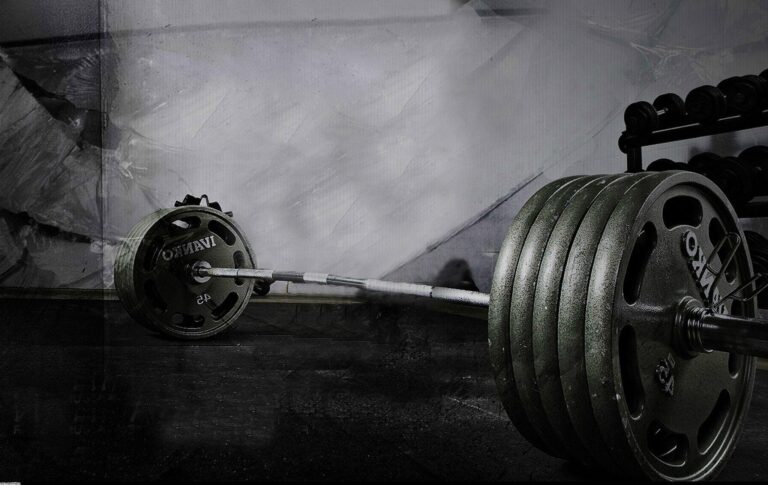Innovative Trends in Gym Equipment for 2024
The fitness industry has seen tremendous growth over the past decade, and with this expansion comes continuous advancements in gym equipment technology. Whether you work out at home or in a commercial gym, staying on top of the latest fitness innovations can enhance your workout experience, improve results, and make training more enjoyable. The year 2024 promises to bring some exciting changes and trends in gym equipment, focusing on smarter, more efficient, and user-friendly designs.
In this article, we’ll explore the innovative trends in gym equipment for 2024, covering advancements in smart technology, sustainability, biomechanics, and equipment design. These trends will not only improve the effectiveness of your workouts but also make fitness more accessible and tailored to individual needs.

Smart Gym Equipment: AI-Driven Workouts
One of the most prominent trends in gym equipment for 2024 is the integration of artificial intelligence (AI) and smart technology. Smart gym equipment is transforming the fitness landscape by offering personalized workout experiences and providing real-time data to users. AI-driven equipment can analyze your performance, recommend exercises, and adjust intensity levels based on your progress, making workouts more efficient and tailored to your fitness level.
How AI Is Revolutionizing Gym Equipment:
Personalized Training Programs: Smart equipment like treadmills, stationary bikes, and strength machines can now sync with fitness apps to create customized workout programs based on your goals, fitness level, and past performance. These machines can track your progress and automatically adjust settings to help you hit new targets.
Real-Time Feedback: AI-powered gym equipment can provide real-time feedback on your form, technique, and intensity. For example, smart weight machines can detect if you’re using the wrong form and alert you to correct your movements, reducing the risk of injury and improving the efficiency of your workout.
Connected Fitness: The rise of connected fitness equipment, such as smart mirrors and virtual training systems, allows users to access on-demand workouts led by personal trainers from the comfort of their homes. These systems use AI to track your movements and offer real-time corrections, giving you a more interactive and immersive experience.
Wearable Integration: Smart gym equipment increasingly integrates with wearable fitness trackers like smartwatches and heart rate monitors. This allows the equipment to adjust workout intensity based on real-time data like heart rate, oxygen levels, and calories burned.
Notable Examples:
- Tonal: A smart strength training system that uses digital weights and AI to customize workouts.
- Peloton: Known for its AI-driven stationary bikes and treadmills that offer live and on-demand classes with real-time performance tracking.
- Mirror: A smart fitness device that acts as both a full-length mirror and a virtual trainer, providing real-time workout feedback.
Sustainable Gym Equipment: Eco-Friendly Fitness
As sustainability becomes a growing concern across industries, the fitness sector is also seeing a shift toward eco-friendly gym equipment. In 2024, more brands are focusing on creating products that have a lower environmental impact, using sustainable materials, energy-efficient designs, and equipment that promotes a greener workout environment
Key Sustainable Gym Equipment Trends:
Recycled and Eco-Friendly Materials: Many manufacturers are turning to recycled materials for gym equipment production. For example, some treadmills and stationary bikes now use frames made from recycled metals or plastics, while yoga mats and dumbbells are being crafted from eco-friendly, non-toxic materials.
Energy-Generating Equipment: In an innovative twist, some gym equipment can now generate electricity through user movement. Equipment like treadmills, ellipticals, and exercise bikes can convert the energy from your workout into usable electricity, helping power the gym or even contributing to the grid.
Longer-Lasting Products: Sustainable fitness companies are focusing on durability and long-term use, designing products that are built to last. This reduces waste and promotes a culture of reusing and refurbishing equipment rather than replacing it frequently.
Waterless Cleaning Systems: Some gyms are adopting waterless cleaning solutions for equipment maintenance, reducing water waste while still ensuring hygiene and cleanliness. These systems use eco-friendly, biodegradable cleaning products to keep equipment in pristine condition.
Notable Examples:
- SportsArt Eco-Power Treadmills: These machines harness the energy created during your workout and convert it into electricity, promoting energy efficiency.
- Manduka Eko Yoga Mats: Made from biodegradable natural tree rubber, these mats are a sustainable alternative to traditional PVC mats.
Biomechanics and Functional Training Equipment
In 2024, a growing focus on biomechanics and functional training is driving innovation in gym equipment. Functional training involves exercises that mimic real-life movements and improve coordination, balance, and strength. As fitness enthusiasts seek workouts that enhance their daily activities and athletic performance, gym equipment is evolving to cater to this demand.
Biomechanical Equipment Advancements:
Movement-Based Machines: Traditional gym machines that isolate specific muscle groups are being replaced by equipment that encourages more dynamic, full-body movements. This trend reflects a deeper understanding of biomechanics, emphasizing exercises that promote better movement patterns and prevent injury.
Functional Training Systems: Equipment like cable machines, suspension trainers (e.g., TRX), and kettlebells are becoming more popular as they allow for a wide range of functional exercises that engage multiple muscle groups at once. New designs are focusing on improving the range of motion, stability, and resistance to better mimic real-world physical challenges.
Biomechanics-Driven Weight Machines: New weight machines are being designed with biomechanics in mind, ensuring that they guide users through natural, anatomically correct ranges of motion. This minimizes the risk of injury and enhances the effectiveness of strength training exercises.
Motion-Tracking Technology: In 2024, motion-tracking sensors are being integrated into functional training equipment. These sensors can monitor your movement patterns, giving you detailed feedback on your performance and helping you fine-tune your technique for optimal results.
Notable Examples:
- TRX Suspension Training: A portable training tool that allows users to perform bodyweight exercises in multiple planes of motion, improving balance, strength, and flexibility.
- Theragun Pro: A percussive therapy device that helps with muscle recovery by targeting specific muscle groups with precision, improving mobility and reducing soreness.
